 Movies and TV
Movies and TV  Movies and TV
Movies and TV  History
History 10 Things You Didn’t Know About the American National Anthem
 Technology
Technology Top 10 Everyday Tech Buzzwords That Hide a Darker Past
 Humans
Humans 10 Everyday Human Behaviors That Are Actually Survival Instincts
 Animals
Animals 10 Animals That Humiliated and Harmed Historical Leaders
 History
History 10 Most Influential Protests in Modern History
 Creepy
Creepy 10 More Representations of Death from Myth, Legend, and Folktale
 Technology
Technology 10 Scientific Breakthroughs of 2025 That’ll Change Everything
 Our World
Our World 10 Ways Icelandic Culture Makes Other Countries Look Boring
 Misconceptions
Misconceptions 10 Common Misconceptions About the Victorian Era
 Movies and TV
Movies and TV The 10 Coolest Stars to Set Sail on The Love Boat
 History
History 10 Things You Didn’t Know About the American National Anthem
 Technology
Technology Top 10 Everyday Tech Buzzwords That Hide a Darker Past
Who's Behind Listverse?

Jamie Frater
Head Editor
Jamie founded Listverse due to an insatiable desire to share fascinating, obscure, and bizarre facts. He has been a guest speaker on numerous national radio and television stations and is a five time published author.
More About Us Humans
Humans 10 Everyday Human Behaviors That Are Actually Survival Instincts
 Animals
Animals 10 Animals That Humiliated and Harmed Historical Leaders
 History
History 10 Most Influential Protests in Modern History
 Creepy
Creepy 10 More Representations of Death from Myth, Legend, and Folktale
 Technology
Technology 10 Scientific Breakthroughs of 2025 That’ll Change Everything
 Our World
Our World 10 Ways Icelandic Culture Makes Other Countries Look Boring
 Misconceptions
Misconceptions 10 Common Misconceptions About the Victorian Era
10 Bloodthirsty Struggles Of The Tibetan Empire
It’s easy for modern people to think of the Tibetan people as the underdogs of history, peaceful and nonviolent victims of communist China’s aggression. But in the Middle Ages, Tibet was an expansive, violent empire that roared down from the top of the world to conquer and pillage.
10 Foundation Of Imperial Power
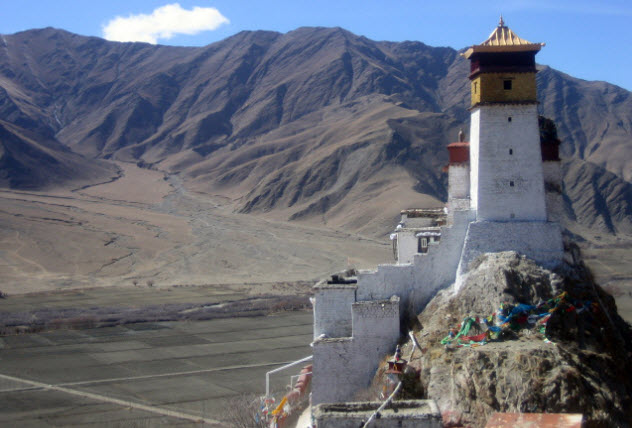
In the seventh century, much of Tibet was divided into squabbling, petty fiefdoms with no central authority. Each fiefdom was ruled by a leader called a gyelpo. During this period, Buddhism began to replace Hinduism, with Chinese science, knowledge, and technologies filtering in for the first time.
One by one, the independent fiefdoms were snuffed out by the rising power of the Yarlung Kingdom in Central Tibet, which formed the foundation of what we know as the Tibetan Empire. This process was started by an energetic warlord named Namri Songtsen. From a base near Mount Yarlha Shampo on the border of Bhutan, he fought to bring the wild tribes around his chiefdom under his yoke, forming the basis for a centralized kingdom.
Namri Songtsen was assassinated around 620, although the recorded dates of this event vary from 618 to 627. His death caused a general insurrection in the court, which was quelled by a loyal adviser called Myang. However, a traitorous upstart named Zutse implicated Myang in a plot, and the latter was killed when his castle was stormed by aggressors.
Zutse sought to assassinate the prince and heir to the throne, Songtsen Gampo, but failed and committed suicide. Zutse’s son brought the severed head of his father to Songtsen Gampo to prove his loyalty and was allowed to retain his family’s fiefdom. Later, Songtsen Gampo’s younger brother became a pretender to the throne, only to die in his bed in a fire believed to have been set by a servant.
9 Destruction Of Zhang Zhung
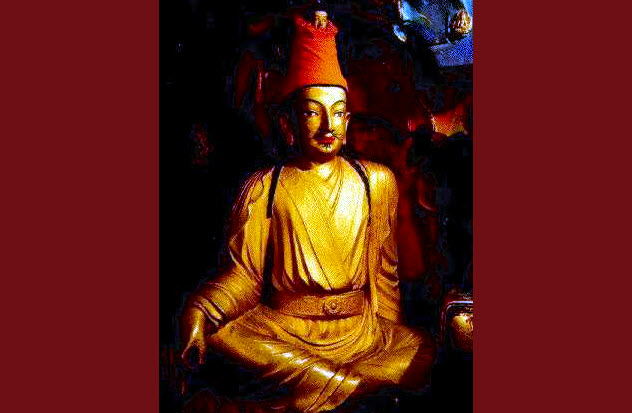
In the western region of Upper Tibet, there was once a civilized kingdom called Zhang Zhung, destroyed with the rise of the Tibetan Empire. This kingdom was the source of the pre-Buddhist Bon religion. A shamanistic and mystical religion with links to Zoroastrianism and Hinduism, Bon involved animal sacrifice and the burning of juniper. Bon sources say that Zhang Zhung was ruled by 18 kings, which may mean different kingdoms or dynasties in a single cultural region or confederation. Zhang Zhung may have had a form of writing called “Mar,” a divine script meaning “coming from the sky.” With no extant writings from that time, our knowledge comes from the records of their Tibetan conquerors.
Before it ceased to be an independent polity, Zhang Zhung was ruled by Limigya. Tibet was led by Songtsen Gampo, who was Tsenpo (“ruler”) of the kingdom under the title “Divine Mighty One Magically Manifest.” Initially, Songtsen sought good diplomatic relations with his neighbors, hoping for a dynastic alliance with Zhang Zhung. But things didn’t go that way.
Songtsen’s sister Semarkar was given to Limigya in marriage to cement good relations, but she resented being politically marginalized by Limigya. Poems from the ninth-century Old Tibetan Chronicle portray Semarkar’s dissatisfaction with her new home and her scheme to have her brother conquer her husband’s kingdom. She refused to consummate her marriage, alarming the Tibetans and inducing them to send an emissary to convince her to produce an heir for the greater good.
When the emissary returned to her brother’s kingdom, her poems were sung as songs to Songtsen Gampo. He received her gift of 30 pieces of turquoise, eventually understanding that he should wear them around his neck like a man, not in his hair like a woman. Songtsen invaded Zhang Zhung, killed Limigya, and destroyed Limigya’s power base.
Khyunglung Ngulkhar, Zhang Zhung’s capital, became the new residence of the administrative chiefs of Central Tibet. After Zhang Zhung and the highland kingdom of Sumpa were conquered, the division into administrative units known as tongde saw the first unification of the Tibetan plateau and provided man power and resources that spurred the rise of the fearsome Tibetan Empire.
8 Conquest Of The Tarim Basin
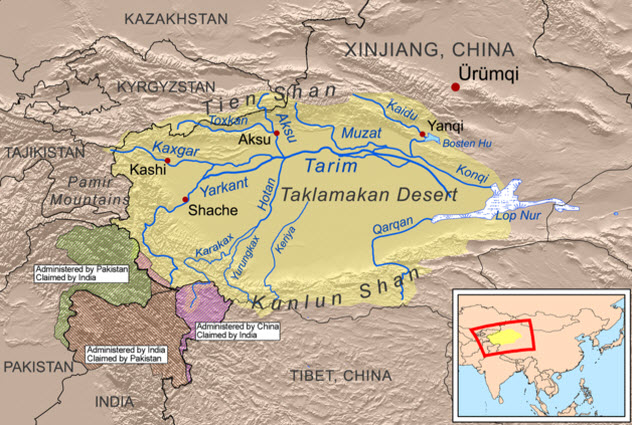
Songtsen Gampo was succeeded by his grandson Mangsong Mangtsen, who began his reign by conquering the ‘A zha (aka “the Tuyuhun”) from Mongolia, a people who had gone to war against both the Chinese Tang dynasty and the Tibetans. The defeat of the ‘A zha forced their king, Nuohebo, to flee to China for refuge with his remaining troops where they were resettled to keep them under China’s thumb.
Mangsong was then able to expand Tibetan influence into Chinese territory, a feat his grandfather had never accomplished. Mangsong also extended Tibetan power into the Tarim Basin in modern Xinjiang as far as the Wakhan Valley in what is now Afghanistan.
The Tang were not pleased about losing control of the oasis cities of the Silk Road, which were vital for both trade and communication in western China. However, the Tibetans were able to subjugate the Western Turks of the region and gain their fealty by 670, thereby controlling large trade centers such as Kashgar and Khotan.
The Tang sent a large and formidable army to challenge the Tibetan expansion. But the Chinese were decisively defeated by a massive Tibetan force led by General mGar Khri ‘bring at Dafeichuan, which forced the Chinese to withdraw. During this period, the mGar clan (aka the “Gar clan”) was the real power behind the throne of Tibet, as chief minister Gar Songtsan had taken over much of the king’s authority. The mGar had become a threat to royal power that had to be eliminated.
7 War Against The Clan
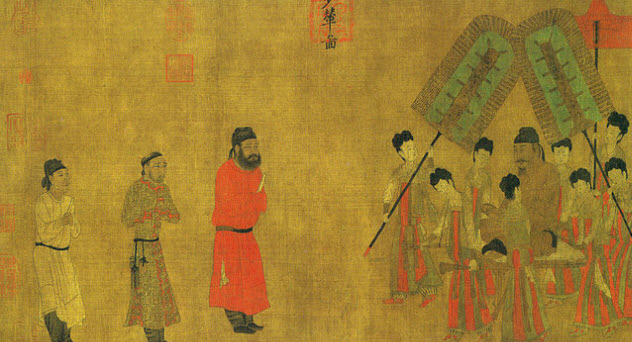
Believed to be descended from the Yuezhi people, the mGar were a powerful clan that had been driven south by the Xiongnu hordes and had resettled in Tibet around 190 BC. The name “mGar” literally meant “blacksmith,” suggesting humble origins. However, the clan had great influence and strength for over 50 years, contributing several chief ministers and great generals to the expanding Tibetan kingdom and empire.
The mGar soon got into political trouble. They were distrusted by Thrimalo, the wife of Mangsong Mangtsen (who died in 667) and mother of the new King Tridu Songtsen, who was only eight years old when he ascended to the throne. The clan was also targeted by some astute diplomatic chicanery by a Tang ambassador named Kuo Yuan-chen.
The Tibetan general mGar Khri ‘bring had demanded that the Chinese withdraw from the Tarim Basin on the basis that the local people should be ruled by their own kings. Kuo questioned whether Tibet had designs on the local kingdoms, but mGar replied, “If Tibet lusted after territory, we would trouble your borders, and thus invade [your prefectures of] Kan and Liang; why should we wish to scheme for profit 10,000 li away?”
Back in the Tang court, Kuo suggested a counterproposal for peace with the mGar, agreeing to exchange control of the Nu-shih-pi tribes for the lands of Koko Nor and the Tuyuhun. Kuo believed that the Tibetan people wanted peace and that this would weaken the mGar, causing internal turmoil within Tibet.
Kuo’s calculations were correct. While mGar Khri ‘bring was defeating a much larger Chinese army at the battle of “Chinese Graveyard at Tiger Pass,” Tridu Songtsen moved against the clan, arresting and executing over 2,000 of the mGar under the guise of a hunting expedition.
When mGar Khri ‘bring refused to surrender, his troops largely abandoned him rather than face a royal army, and the great general took his own life. Most of the remaining mGar committed suicide or fled to China, where they were granted official posts and titles under the Tang. Tridu Songtsen then married a number of princesses from neighboring regions but died in a campaign against the kingdom of ‘Jang (aka “Nanzhao”) in what is now modern China’s Yunnan province.
6 Shifting Alliances In Central Asia
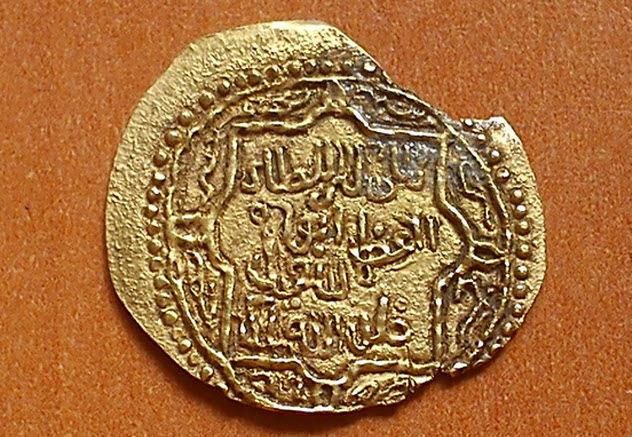
The Umayyad Caliphate, the first Islamic dynasty, had invaded the Central Asian region of Bactria in 663, where Buddhist inhabitants were initially given dhimmi status, which is protection to keep their original faith. In 680, a rebellion in Iraq against Umayyad rule distracted Arab attention from Central Asia. Taking advantage of that distraction, the Tibetans allied with the Turkmen in 705 in an attempt to drive the Arabs out of Bactria. Although that first attempt failed, the Turkmen leader Nazaktar Khan captured the region in 708. He instituted fanatical Buddhist rule and beheaded a prominent Muslim abbot.
The Arab general Qutaiba reconquered the area from the Turkmen and the Tibetans and took revenge on the Buddhists, causing many to flee eastward. The Tibetans decided to switch sides and join with the Umayyads.
However, the Arabs had a policy that all their allies needed to accept Islam. The Tibetans humored their new allies and invited a missionary named al-Hanafi to the Tibetan court to preach the word of Muhammad. But the reception at the court was cold, and there were few, if any, Tibetan converts to Islam. This didn’t seem to bother the Umayyads too much.
After the death of Qutaiba, the Tang pushed once more into Central Asia, taking territory from the Umayyads, the Turgish, and the Eastern Turks. Then the Tang allied with the newly arrived Qarluqs. The Turgish joined the Arab-Tibetan alliance, and the Tang Chinese were pushed back.
The Turgish and the Tibetans turned against the Umayyads, who were forced back to Samarkand where they allied with the Chinese. After the Turgish confederation broke up, the Tibetans relied on a traditional alliance with the Turki Shahis of Kabul. As a result, the Arabs were able to regain some territory.
One interesting aspect of this period was the small role that religion seemed to play in the conflicts. Although the Arabs were Muslim and almost all the other major players were Buddhist, these conflicts were actually realpolitik struggles of constantly shifting alliances and betrayals.
5 Occupation Of Chang’an
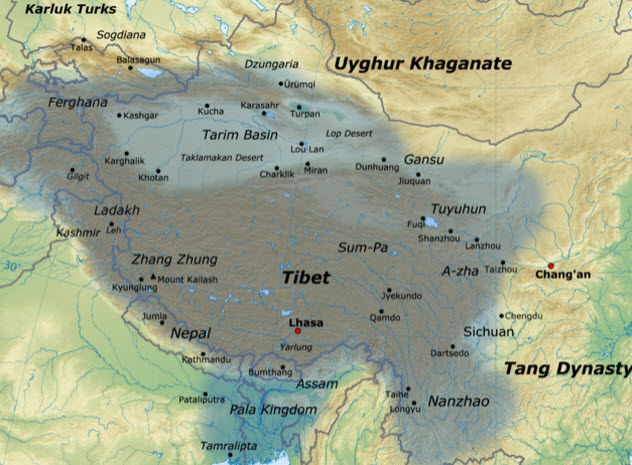
In 755, the outbreak of the An Lushan rebellion weakened the Tang dynasty and induced certain aggressive officials in Tibet to stage a coup against Emperor Tride Tsuktsan. They installed 13-year-old Trisong Detsan as the new emperor, who immediately launched a wave of expansion.
To quell unrest in the interior, the Chinese had been forced to withdraw many border garrisons, which opened up the border for the Tibetans to raid at will. Despite sending peace emissaries, the Tibetans became notorious for massacres and kidnapping of the Chinese peasantry.
In 763, two Tang envoys sent to Tibet were detained at the border as the Tibetans were preparing a massive invasion of China. The Tang emperor fled the capital, Chang’an, and escaped to the city of Shanzhou while a defeated Chinese general led the Tibetans straight into the imperial capital. The Tibetans installed a puppet emperor, the uncle of the Chinese princess who had married into the Tibetan imperial family.
However, after occupying Chang’an for only 15 days, the Tibetan forces were tricked by the actions of Tang General Guo Ziyi, who used fires and war drums to make it seem like a large imperial army was approaching to besiege the city. The Tibetans fled the capital, and it was retrieved by imperial forces.
During the 760s and 770s, there were frequent, small border raids and conflicts between the Tibetans and the Tang but few large-scale hostilities. With both sides unable to control ambitious generals on the frontier, attempts to secure a peace treaty or covenant were marred by distrust and bad faith.
An understanding of Tibetan imperialism can be seen from records of the Chinese city of Dunhuang, occupied by Tibet in 786. The inhabitants were forced to wear Tibetan dress, except for special occasions when they could wear their traditional Chinese clothing. Tibetan officials were notorious for kidnapping Chinese women to be their wives until the practice caused too many complaints and was stamped out.
A bureaucratic hierarchy formed, with the lowest Tibetan officials outranking the highest Chinese officials. The city became an important center of translation and papermaking for the Tibetans as Chinese scribes labored to produce thousands of Buddhist sutras under threat of the lash and appropriation of property.
4 A Short-Lived Alliance
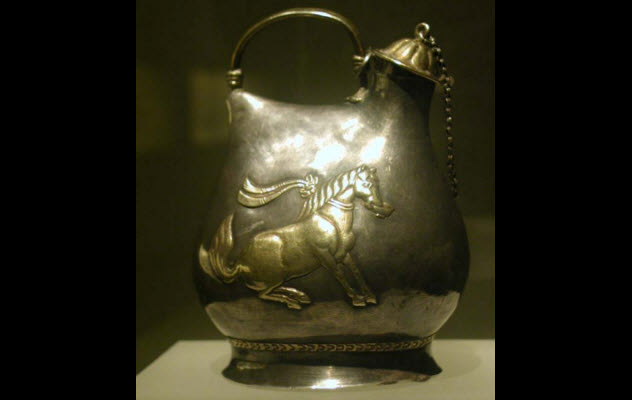
In 779, Dezong rose to the throne of China’s Tang dynasty, which was struggling from internal insurrection and external pressures. Dezong hoped that an alliance with the Tibetans would reduce the dynasty’s reliance on the hated Uighurs and help to settle the southern frontier by establishing a stable, permanent border. Sent to the Tibetan court, Tang diplomats returned around 500 captives from various missions sent to Chang’an over the years. Unfortunately, this coincided with a Tibet-Nanzhao attack on the Tang in the southeast, which was repelled.
Despite some difficulties in the negotiations, a treaty was eventually worked out between Dezong and the Tibetans to establish a permanent border. The treaty allowed the Tang to deploy more troops to defeat rebels, but they had a hard time with the troops fighting under the rebel Zhu Ci and asked the Tibetans for military assistance.
In exchange for their help, the Tibetans wanted the Chinese to pay them an annual subsidy of 10,000 bolts of silk and cede the western territories of Anxi and Beiting. Negotiations broke down over these demands, so a Tang envoy forged a letter implying that the Tang would accept. Tibetan troops were sent to aid the Tang and fought a crucial battle that contributed to the eventual defeat of Zhu Ci. However, the Tibetan forces withdrew before the rebel-occupied capital was retaken.
Afterward, Dezong was willing to accede to the Tibetan demands, but his ministers convinced him that a Chinese presence in the far west was a crucial distraction for the enemy. So he only agreed to provide the silver. The enraged Tibetans invaded, sweeping through northwestern China and seizing people and livestock.
The Tang reacted quickly. The war raged until dwindling supplies and the news that a Tang general had invaded Tibet forced the Tibetan armies to withdraw. Under the ruse of a peace offer, the Tibetans ambushed a group of Tang envoys, murdering and kidnapping most of them. Ultimately, the Tang made nice with the Uighurs and put out feelers to Nanzhao and the Arabs in the hope of neutralizing Tibet through encirclement.
3 War With The Abbasid Caliphate

The Abbasid Caliphate, which had replaced the Umayyads in Central Asia, defeated the Tang Chinese at the crucial Battle of Talas River in 751 with the help of their Qarluq allies. However, the Qarluqs soon embarked on their own expansion campaign into Suyab, Ferghana, and Kashgar.
They turned against the Abbasids and allied with the Tibetans, the Tibetan vassals in Kabul, and the White-Clad Oghuz. After the death of Caliph al-Rashid in 808, there was an Abbasid civil war between his sons, which was resolved in favor of al-M’amun in 813. Al-M’amun declared a holy war against the Tibetans and their allies, probably blaming them for the death of his father and for supporting Abu Muslim rebels against Abbasid rule.
In 815, the Abbasids captured Kabul. They forced its Turki Shahi ruler to convert to Islam and send a golden Buddha statue to Mecca, where it was publicly displayed with a proclamation that the Tibetan ruler had converted to Islam. This was either a misunderstanding or propaganda. Either way, the statue was eventually melted down for coins. The Abbasids also took Ferghana from the Qarluqs and Gilgit from Tibet, sending a humiliated Tibetan general as a captive to Baghdad.
However, the Abbasids didn’t dare push further because the local rulers in western Turkistan and eastern Iran had begun to assert their independence. As the Abbasids dealt with these concerns closer to home, the Tibetans and Turki Shahis regained their lost holdings.
Occurring largely during the reign of the Tibetan Emperor Sadnalegs, these wars did result in some Arab forces being captured and incorporated into the Tibetan army, where they largely served in frontier garrisons. Some may also have settled in the central regions.
2 Reign Of Ralpacan

Under the rule of Emperor Ralpacan, Tibet reached its largest territorial expansion, controlling parts of China, Nepal, India, Baltistan, Khotan, Gilgit, Zhang Zhung, and most of Gansu and Turkistan. Ralpacan was considered one of the last “dharma kings,” or chos rgyal, who cemented the influence of Buddhism throughout the country.
He was also responsible for administrative reforms that weakened the nobility. Ralpacan was a devout Buddhist, giving great support to monasteries and stupas and funding the translation of Sanskrit texts. However, he was no slouch in the war department.
In 810, the Tang emperor sent a letter requesting the return of three provinces. Instead, Ralpacan sent a great general named Zhang ‘Bro stag to wage war on the Chinese and the Uighurs in the north. In 816, General Zhang led a raid that reached within a short distance of the Uighur capital of Ordu Baliq. He also launched an attack on the southern Chinese border city of Yanzhou in 819. Another attack on Chinese territory in 821 may have contributed to the first real peace treaty between Tibet and China, which was negotiated by Buddhist monks from both sides.
Treaty talks took place at the border town of Gugu Meru. The arrangements were inscribed in Tibetan and Chinese on stone pillars erected at Gugu Meru, Lhasa, and Chang’an. The treaty is said to have established the relationship of China and Tibet as one of “uncle and nephew.”
Despite his success in establishing peace with China, Ralpacan had made enemies in his own country with his support of Buddhism. He had insisted that every seventh household support a Buddhist monk, making them a favored class in the country. When Ralpacan attended state functions, he supposedly tied long, yellow ribbons in his hair, and monks sat on them. All this angered followers of the Bon religion, who sought to replace Ralpacan with his brother Lang Darma. Although some records state that Ralpacan died of illness, others claim that two anti-Buddhist ministers strangled him.
1 Sectarian Violence And Imperial Collapse
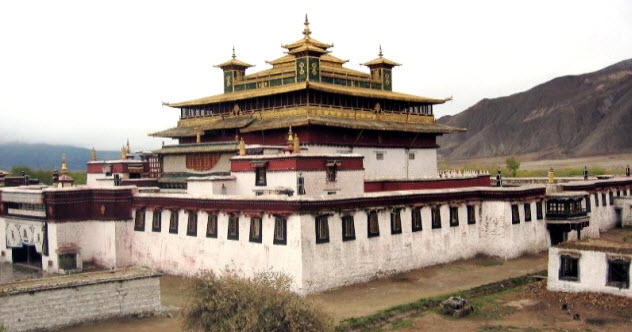
Lang Darma’s short reign saw the suppression of Buddhism in Tibet but also the catastrophic collapse of imperial power. The taxes that Ralpacan had instituted to support the Buddhist monasteries had caused much resentment among the noble clans, which was probably exacerbated by a series of bad harvests.
The monasteries were exempt from taxation and military conscription, causing a shortage of both funding and man power for the Tibetan imperial project. An increasing number of people were giving gifts and inheritances to the monasteries, slowly shifting control of agricultural land from the noble clans to the powerful Buddhist abbots.
One historian claims that Lang Darma had “commanded all Buddhist priests and Bon magicians to invoke . . . all protective deities of the Land of Snows.” Allegedly, this is the source of the modern Tibetan festival where oracles channel their deities, who then feast and play games of dice for the souls of humans. On the day that the festival was first celebrated, a bolt of lightning struck the Samye Monastery, which was seen by Lang Darma as a sign that the gods were unhappy with Buddhism.
Lang Darma presided over the closing of monasteries, with monks forced to convert or die. Temples were also destroyed, and foreign Buddhist teachers were deported. The destruction of the clergy meant that only folk Buddhism would survive in the country for the next few centuries while the Bon religion rose to supreme influence once again.
As political forces within the Tibetan court had aligned themselves with either the Bon or the Buddhists, this was not merely a religious conflict. Instead, it was Lang Darma’s way of eliminating the destabilizing political influence of the monasteries and their allies.
In 846, Lang Darma was shot to death by a Buddhist monk named Lhalhung Beigye Dorgye, who is said to have disguised himself as a Bon priest (or in a strange robe that was black on the outside and white on the inside). After Lang Darma’s death, conflict erupted between his two sons, Yumten and Oedsung, who were supported by different court factions. The country became divided into northern and southern halves while vassal states broke away from the Tibetan yoke. Central administration ended, and Tibet was once more a land of squabbling, petty fiefdoms.
David Tormsen is baffled as to why the Tibetans weren’t a playable civilization in Age of Empires II: Age of Kings. Email him at [email protected].
